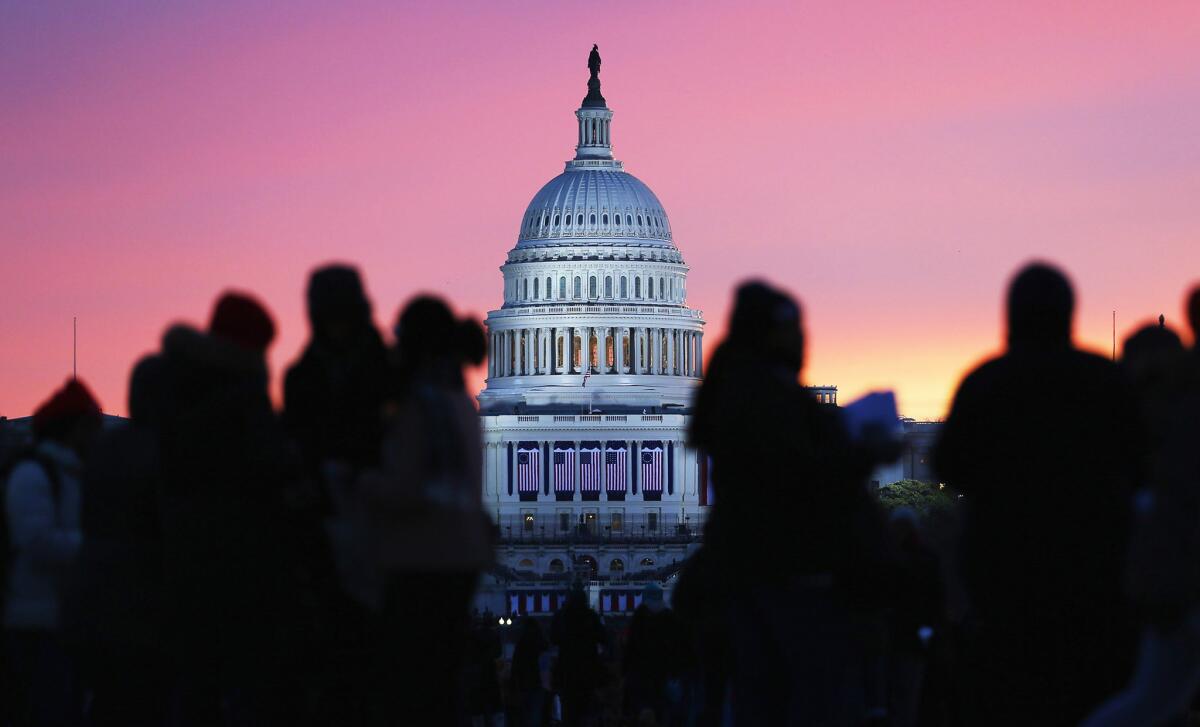Forecast projects small Democratic gain in House in midterm election

- Share via
WASHINGTON -- Democrats have a reasonable shot at avoiding the “sixth-year curse” that usually hits the president’s party in midterm elections, but they’re unlikely to recapture control of the House, according to an early forecast from a prominent political scientist.
Since the start of the 20th century, eight midterm elections have taken place in a president’s second term. In all but one case, the president’s party lost seats, with the one exception occurring in Bill Clinton’s second term. More than just a statistical oddity, the pattern reflects important dynamics in the electorate, including the fact that “opposition party voters are usually more motivated to turn out to express their discontent with the president and his party than voters from the president’s party are to turn out to express their support,” says Emory University political scientist Alan I. Abramowitz.
Another factor is that the president’s party often has made significant gains in previous elections, meaning that by the second midterm, the party has many seats at risk. Because the Democrats lost so many seats in 2010, that’s less true for them this time around.
PHOTOS: President Obama’s past
The forecasting model Abramowitz has developed currently predicts that Democrats would pick up one House seat in the 2014 midterms. They would need a net of 17 seats to regain control of the House.
The outlook in the Senate, where Democrats have a 55-45 majority, is less favorable for them because of the large number of seats they will need to defend. Democrats have at least nine Senate seats potentially at risk in the next election, seven of them in states that Mitt Romney carried in November.
With 21 months to go, the forecast could change greatly, but Abramowitz notes that Democrats would need a very large advantage in preelection polling to have a realistic hope of picking up the majority in the House. That’s partly because Republicans used their control of state legislatures in 2010 to draw legislative district boundaries that protected their incumbents. It’s also because Democrats are heavily concentrated in urban areas, giving Republicans more districts in which they have a reliable majority.
Currently, very few House seats appear up for grabs. Only 16 House Republicans represent districts that President Obama won in November and nine Democrats represent districts that Romney carried. Beyond those “crossover” districts, slightly more than a dozen others are considered prime targets for a turnover.
PHOTOS: President Obama’s second inauguration
Follow Politics Now on Twitter and Facebook
Twitter: @DavidLauter
More to Read
Get the L.A. Times Politics newsletter
Deeply reported insights into legislation, politics and policy from Sacramento, Washington and beyond. In your inbox twice per week.
You may occasionally receive promotional content from the Los Angeles Times.











